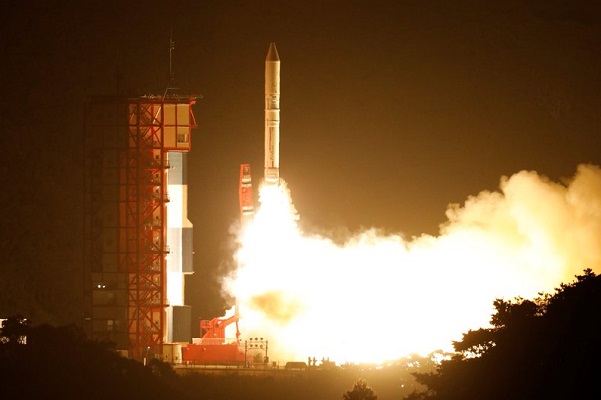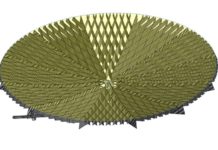In its first launch of the year, Japan’s space agency JAXA launched its radar satellite ASNARO-2 using its small launcher Epsilon-3. The launch took place this morning, at 6:06 a.m. JST (GMT+9) from Uchinoura Space Center in southwest Japan.
The launch, originally planned for November 2017, had been pushed back due to a glitch in the electrical system of the Epsilon-3, a launch vehicle that JAXA rarely uses. Today’s launch marks the third flight of the four stage solid-fuel rocket, which made its maiden flight in 2013 and another in 2016.
Unlike JAXA’s workhorse launch vehicle, the H-IIA liquid fuel rocket developed by Mitsubishi Heavy Industries, Epsilon is a JAXA-developed vehicle intended to launch small satellites into orbit. The vehicle was meant to replace JAXA’s Mu family of rockets, which cost twice as much to develop as the Epsilon. Epsilon has a height of 24.4m and a diameter of 2.4m, and can carry about 475kg to Sun Synchronous Orbit (SSO).
The launch today took 52 minutes 35 seconds to loft the radar satellite ASNARO-2 into what is most likely a 500km Low Earth Orbit (LEO). The satellite, developed by Japanese corporation NEC for the Japanese government, weights 570kg and carries an X-Band Synthetic Aperture Radar. Its predecessor, ASNARO-1, was launched in 2014, and is used for earth observation.
JAXA’s next launch will likely by of the SS-520-5, a modified sounding rocket that can carry microsatellites to LEO. The SS-520-5 has had only one flight attempt so far, 14 January 2017, during which contact was lost 20 seconds after liftoff. This year’s SS-520-5 will carry the TRICOM-1R, a modified version of last year’s TRICOM-1.
Watch the launch here:







